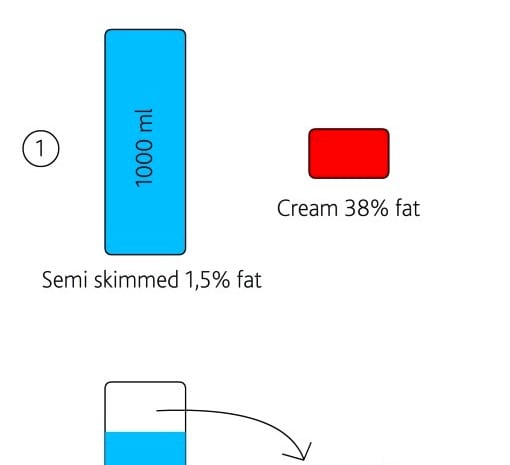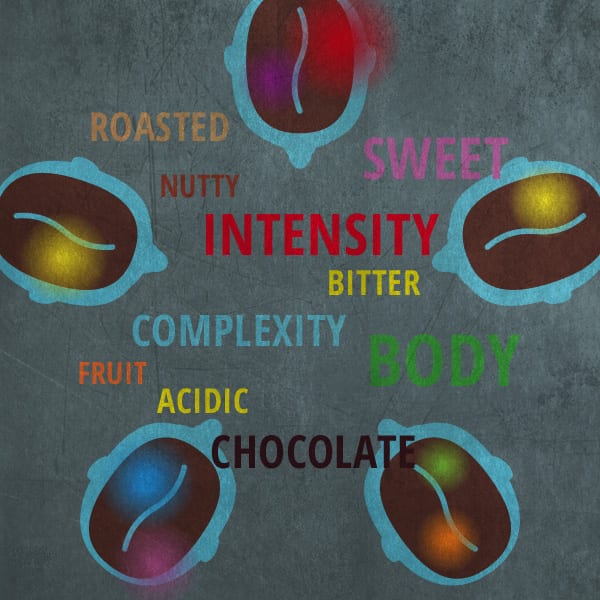Great to have you here! In this blogpost I want to share some background for the studies we did on Behavioral Economics as there was a lot of things going on that lead to the studies that the are now published in The British Food Journal (http://www.emeraldinsight.com/doi/pdfplus/10.1108/BFJ-03-2016-0127), Cafe Europa Magazine (September 2016) and Reco (https://youtu.be/3Jb03RWYrQ4).
The first study we did was done by Imane Bouzidi with myself and Thomas Zoëga Ramsøy from Copenhagen Business School at Decision Neuroscience Research Group (now Neurons inc (http://neuronsinc.com/)) as supervisors. This study is explained in details in SCAE’s members archive but here is a summary of the research design and the results.
A high quality and a low quality coffee were selected (a premium coffee from Kontra and a commodity coffee called Artnok which is Kontra’s commodity range (Kontra spelled backwards!)) and served for random customers in a shopping centre in Copenhagen. The coffee was served in cups with brand labels to influence the customer cognitively with the brand equity (https://en.wikipedia.org/wiki/Brand_equity) but in the cups was not coffee from any of those rands but just either the HQ or the LQ based on random selection as seen in the figure below.

Before tasting the coffees the customers filled out a questionnaire about their expectations for each coffee based on the brand and then later they rated the coffee after having tasted them. After they had tasted the coffees the consumed amount of each cup was measured and then they were allowed to choose a coffee they could have as a small benefit for their time in participation. So in conclusion the effect measures in the study were
- Brand expectations (‘liking’ [conscious])
- Rating of coffee samples (‘liking’)
- Measure amount consumed (‘wanting’ [sub-conscious])
- Final choice of coffee brand (‘behaviour’)
A summary of the results
- High brand equity gave
- higher tasting scores
- lower difference between HQ and LQ scores
- Sensory Scores: LQ was preferred! (P< 0,001)
- Consumption: LQ was preferred! (P< 0,001)
- HQ was preferred without milk
So if the brand had high brand equity people scored it higher when tasting it (1a) but also distinguished less between HQ and LQ (1b) both of which might be expected. A slightly more surprising (and a bit disappointment as a specialty coffee professional) was how strongly the data proved that consumers preferred low quality (point 2 and 3 with a really strong significant result with a P<0,001) but the real surprise and source of wonder for me was that despite 2 and 3 consumers were clear in pointing to the HQ when asked which coffee they could enjoy without milk! Without support in the data this gave me a hint for a hypothesis that the consumers preferred the LQ out of habit but when asked which coffee they could drink without milk they were able to taste that there was ‘less unpleasant flavours’ that they wanted to remove in the HQ which is what milk does in my mind. I believe that there is a physiological response of aversion for the unpleasant flavours in coffee that we in the specialty coffee business do our best to remove by selecting defect-free green beans, slow roast to avoid burnt and bitter flavours and a less aggressive brew (20% extraction rather than 30% as is the norm in commodity). You can get used to these bad flavours to the degree that you develop af preference when offered a choice between HQ and LQ but you are still able to recognize that HQ is the most pleasant to drink if you are not adding milk.
This led us to another pilot study that is strictly a pilot in the sense that we did not have a big enough cohort of subjects but we just wanted to make a small test that we could do in a few hours to get ideas for future studies. At this point Thomas Ramsøy had left Copenhagen Business School to start his own consumer research company Neurons Inc. (neuronsinc.com) and then I was lucky enough to meet Toke Fosgaard (https://dk.linkedin.com/in/tokefosgaard) who is now my playmate when it comes to studies in behavioral economics. Toke Fosgaard, Ida Steen and I had a cohort of 11 of Toke’s students with age 22 to 28 and we selected a high quality coffee and a low quality coffee. For this study we knew, that we did not have enough consumers so in order to increase the probability that we got useful data we selected extreme HQ and extreme LQ. The HQ coffee was one of my favorites namely Coffee Collective’s (http://coffeecollective.dk/da/) Kenya and the coffee from the 20 liter batch brewer in the university canteen that is for sure the worst green, roasted in no time and extracted from here to hell which Ida and I could confirm was the case with this coffee. It is a strategic decision whether to choose a HQ and LQ within a very similar flavour range or you should choose a HQ that goes far beyond the LQ/commodity traditional flavour profile. LQ is traditionally rich in bitterness, chocolate, nutty and other non-fruity flavours where HQ chosen from the elite roasteries is rich in acidity and fruitiness that is considered strange for the average consumer. In Imane’s study the HQ was chocolaty and nutty and not acidic so the consumers could concentrate on the quality of the beans rather than being confused with low bitterness and high acidity and fruitiness. But in this study we wanted from extreme LQ to extreme HQ which lead us to the above decisions on samples.
So with the samples at hand we had a room where the students would come in one by one and we changed the setup to alternate between two different setups described below so that half of the students would experience one setup and the other half part of the students would experience the other setup.
Setup 1: Served with the full sales pitch

In setup 1 we prepared two cupping setups, one for me and one for the student (consumer), and in the two cups were respectively the HQ and LQ. I presented myself as external lecturer at Food science with coffee as my full focus area, and I told them about my involvement in SCAE education and research and my many years as consultant world wide to choose high quality green coffee and how I design product ranges for clients so that it was very clear to the student that I was an international authority in coffee quality. After that introduction we did a cupping where I took my time to point specifically everything about the low quality coffee that I did not like and was a consequence of rotten beans, cheap and fast roast profile and an outrageously bad brew and I pointed to all the nice, elegant and juicy notes of the HQ with no attic/basement off flavours and no burtness nor bitterness and we went back and forth between the samples to make sure they really tasted themselves all the bad stuff about the LQ and all the good stuff about the HQ.
After the introduction pitch and the thorough tasting the students were told that they could choose to get one full cup of coffee to go of one of the two coffees as a small gift for their time, and this final choice was the ‘endpoint’ for this study since it was a study in Behavioral Economics where you measure behavior rather than asking for opinion. As a small little extra endpoint we did ask them what they liked about the coffee they chose.
Setup 2: Served with no comments

In setup 2 the HQ and LQ coffees were poured into two cups and when the student entered we did not tell them anything about the coffee at all but we told them that we would like them to taste from both cups and choose which one they would prefer to have as a free gift they could have as a gift for the time they spent on this study. We also asked them what they liked about the coffee they chose.
So what were the results? (drum roll please..)
Which coffee would you like to walk away with?

When the students had the sales pitch where I did EVERYTHING I COULD to heavily nudge them to prefer the HQ still 67% chose to WALK AWAY WITH THE LQ!!! They were nudged by my pitch about myself and the coffees to the degree that most of them excused themselves when choosing the LQ in front of me which was really interesting since even this embarrassment they felt for openly in front of an expert choosing the LQ did not shift the preference for the LQ to the less chosen cup!
Again only having 11 consumers in this study we can’t really calculate any valid statistics but I still think that it is surprising that 11 university students do not have a higher preference for HQ since I would expect this part of the population to be specialty coffee drinkers. Now that the statistics could not really be relied on, we found it interesting to hear the student’s comments when tasting and choosing between the LQ and HQ:
“I just really like a black coffee [the LQ]!”
“I like strong coffee [the LQ]”
“It [the HQ] does not taste like coffee”
“It [the HQ] tastes like tea”
“Is it [the HQ] a thin version of the canteen coffee?”
“This [the HQ] is not coffee this is something else”
These comments are really interesting I think. It points to the extreme HQ as being outside the category of coffee for these consumers which is often what I experience when people are new to the specialty coffee culture and one of the things that I have a keen eye on when I as a consultant help new roasteries design a product range (Online Lean Startup Process,https://old.coffee-mind.com/product/onlineleanstartup/) where I try to make my clients choose a product range where they can show their customers something new without pushing their customers off the cliff which takes careful preference mapping with surveys, focus groups and consumer studies since what is ‘too light roast’ in one area of the world or even city vs rural in one country is not the same from place to place.
References:
- “‘Quality does not sell itself’: divergence between ‘objective’ product quality and preference for coffee in naïve consumers”, The British Food Journal, (http://www.emeraldinsight.com/doi/pdfplus/10.1108/BFJ-03-2016-0127),
- Cafe Europa Magazine (September 2016)
- Reco (https://youtu.be/3Jb03RWYrQ4).



